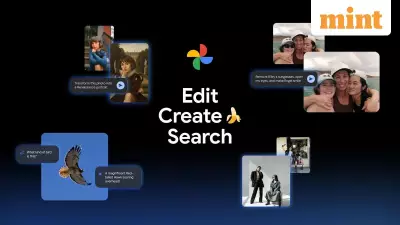
Sir Tim Berners-Lee, the visionary computer scientist who invented the World Wide Web, has released a profound new book titled 'This Is For Everyone' that offers a critical examination of his creation's journey. The book serves as both a historical account and a thoughtful reflection on how the web has evolved from its idealistic beginnings to its current state of centralized control and digital challenges.
The Web's Promise and Present Reality
In his deeply personal account, Berners-Lee traces the origins of his revolutionary idea back to March 1989 when he first proposed the concept while working at CERN, the European Organization for Nuclear Research. His initial vision was remarkably simple yet transformative: to create a system that would allow computers across the world to share information seamlessly. What began as a solution for scientists to exchange research data unexpectedly grew into one of the most significant inventions in human history.
The computer scientist recalls the web's early days with a sense of wonder, describing how he wrote the fundamental technologies that still power today's internet: HTML (HyperText Markup Language), HTTP (HyperText Transfer Protocol), and the first web browser. Remarkably, he made the crucial decision not to patent his invention, ensuring it remained an open platform that could grow without restrictions. This decision reflected his core belief that the web should belong to everyone equally.
From Decentralized Dream to Centralized Control
Berners-Lee expresses significant concern about how the modern web has deviated from his original decentralized vision. He observes that instead of the distributed network of individual websites he imagined, today's digital landscape is dominated by a handful of powerful tech giants. These platforms have created what he describes as 'silos' and 'walled gardens' that concentrate power and control over user data and information flow.
The book identifies several critical challenges that have emerged in recent years:
- The spread of misinformation and fake news across digital platforms
- Increasing concerns about data privacy and user surveillance
- The manipulation of public opinion through targeted content
- The growing digital divide between different regions and communities
Berners-Lee doesn't just critique the current state but also acknowledges his own role in some of these developments. He reflects on whether different technical decisions early in the web's development might have prevented some of today's problems, showing remarkable humility for someone credited with creating one of humanity's most transformative tools.
Charting a Path Forward for the Digital Future
Despite his concerns about the web's current trajectory, Berners-Lee remains fundamentally optimistic about its potential. He continues to advocate for his Contract for the Web initiative, which outlines principles for governments, companies, and citizens to protect the web as a force for good. The contract represents his ongoing commitment to ensuring the web serves humanity positively.
The inventor emphasizes that the future of the web isn't predetermined and that collective action can still steer it toward better outcomes. He argues that technical solutions, policy frameworks, and individual responsibility must work together to address the challenges facing today's internet. His vision includes a web that returns to its roots of decentralization, where users have greater control over their data and digital experiences.
Throughout the book, Berners-Lee maintains that the original spirit of the web—as a tool for connection, knowledge sharing, and collaboration—remains worth fighting for. He calls on developers, policymakers, and everyday users to participate in shaping the next chapter of the web's evolution, ensuring it truly lives up to its promise of being 'for everyone.'
As the web approaches its 35th anniversary, Berners-Lee's reflections come at a crucial moment when societies worldwide are grappling with how to manage digital technologies responsibly. His unique perspective as both creator and critic provides valuable insights for anyone concerned about the future of our connected world.





